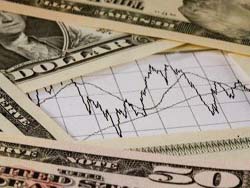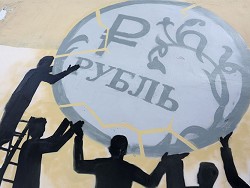
In the oil market on Wednesday, there is a favorable news background:-exporting countries finally confirmed the date and place of the meeting, the U.S. reduced the volume of production, and the fed was surprised by an unexpectedly soft projections on the rates.
The day was ended the growth of quotations by about 3%, a mixture of Brent rose above $40 per barrel and Thursday morning continues to grow. WTI, the other day having made a false breakdown of the trend, began to grow again and is now traded above $39.
First of all, note the statement of reserves and production from the U.S. Department of energy. Oil reserves rose by 1.32 million barrels, which was below expectations, at Cushing also rose, and for the seventh consecutive week, but gasoline stocks and distillates fell.
Well, the most important thing is again decreased production volumes. At this time only by 0.11%, yet it is still falling, now in the U.S. is mined 9,068 million barrels per day.
Not less important role in the mood of the players played the news that a meeting of the largest oil countries will be held on April 17 and will be held in Doha. In the meantime, will prepare for this meeting and developed a mechanism for cooperation and compliance.
Minister of energy Alexander Novak
“April 17 will be held the meeting of the countries-exporters of oil of OPEC and non-OPEC. Currently consultations are held with most of the countries. Most countries confirmed participation”.
Moreover, Iran can also take part and will discuss the possibility of individual conditions in this country.
And even though now many believe that freezing production will balance the market by the end of the year, it is not the most important thing. If countries really agree and, most importantly, will be able to comply with the agreement, then it is perfectly possible to cut production, leading to higher prices.
Well, at the end of the day, positive not to mention the impact on the oil market of the outcome of the meeting of the Federal reserve system. The result surpassed market expectations.
The two-day meeting on 15-16 March, the U.S. Federal reserve, as expected, decided to keep interest rates at the current level. In the fed significantly reduced the assessment on the further development of the American economy and the projected tightening of monetary policy in the current year and in 2017-2018.
In the published text accompanying statements of Federal open market Committee (FOMC) the fed is growing worse downside risks in the global economy in recent months.
Revision of forecasts on the U.S. economy in the period 2016-2018, and also for the future trajectory of interest rates (the so-called dot-plot line) was mainly the result of the second in this year’s fed meeting.
In updated economic forecasts the fed presented lower expectations for inflation and economic changes.
In particular, compared with previous forecasts of the management of the fed, made in December 2015, were reduced expectations for the rate of growth of U.S. GDP in 2016 and 2017: with 2.4% and 2.2% to 2.2% and 2.1% respectively.
Forecast evaluation in the fed’s measure of core inflation (PCE Inflation – the deflator of personal consumer expenditure) was reduced from 1.6% to 1.2% in 2016.
Earlier, following the meeting in December 2015, when for the first time in many years after the onset of the financial crisis in the U.S. the fed has tightened monetary policy, predicted that in 2016 the interest rates can be increased 4 times.
However, according to new forecasts by the fed this year will be only 2 increase. The projected level of interest rates in the US by late 2016 was reduced from 1.4% to 0.9%. A lower level of interest rates is expected in 2017 and 2018: 1.9% and 3% instead of the previously expected values of 2.4% and 3.3% respectively.
Of course, the markets reacted to the results of the meeting by growth on all fronts, and the dollar fell. Now we need only to verify that the market really is “bullish” and will not perceive the deterioration of the weather as a negative signal.







